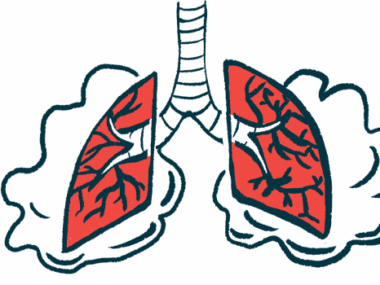Muscle composition improves for children on Spinraza: Study
Motor function scores rose along with body composition measures
Written by |

Muscle-related body composition measures improved in children with spinal muscular atrophy (SMA) types 2 and 3 who were treated with Spinraza (nusinersen), and the improvements correlated with better motor function, a study found.
“Indicators of muscle mass increased in children with SMA types 2 and 3 as treatment progressed, along with motor function scores, revealing that muscle-related variables can be considered an indicator of the efficacy of [Spinraza] treatment,” the researchers wrote.
The study, “Body Composition in Children With Spinal Muscular Atrophy Types 2 and 3 Receiving Nusinersen Treatment: A Longitudinal Cohort Study,” was published in Muscle & Nerve.
People with SMA are lacking in SMN, a protein important for the health of the nerve cells involved in controlling muscle movement. Consequently, these cells gradually degenerate, leading to progressive muscle weakness and wasting (atrophy).
Body composition changes, including a loss of muscle mass and an increase in body fat mass, are seen in people with SMA.
Body composition as biomarker
Researchers believe body composition measures could serve as biomarkers of disease severity in the natural history of SMA, but how body composition is affected by disease-modifying treatments, which work in various ways to boost SMN production, isn’t fully established.
To learn more, the scientists analyzed long-term body composition changes in 46 children with SMA type 2 or type 3 who were treated with Spinraza at a hospital in China.
While more than half (54.3%) of the children were a normal weight at the study’s start (baseline), 26.1% were underweight and 19.6% were overweight. Dietary intake generally remained stable through the study.
Body composition was assessed over a 14-month treatment period using a technique called bioelectrical impedance analysis, which evaluates how a weak electrical current flows through the body.
This approach measures muscle mass, fat mass, and fat-free mass (the composition of the body excluding fat) as well as their respective index measures, which are essentially height-adjusted evaluations of the same concepts.
The researchers found significant changes were in nearly all body composition measures over the follow-up period, with muscle mass (MM), fat mass, and fat-free mass all seeming to increase.
The muscle mass index (MMI) and fat-free mass index (FFMI) showed significant increases over the follow-up period, reflecting gains in muscle-related measures, whereas the fat mass index (FMI) was not significantly changed.
Further analyses indicated meaningful changes in muscle-related measures with time, particularly in children who were able to walk at the study’s start (baseline).
Motor function was evaluated with the Hammersmith Functional Motor Scale – Expanded (HFMSE), with data showing that HFMSE scores correlated with body composition measures.
The strongest relationships were seen with FFMI and MMI, where better motor function was generally associated with higher muscle-related measures.
HFMSE scores in children who could walk at baseline were also strongly correlated with muscle-related variables.
“Our study provided evidence that MM could improve in children with SMA treated with [Spinraza], helping increase muscle strength and power to improve performance, with the greatest benefit in children with good motor ability at baseline,” the researchers wrote.
Nutrition is also key for maintaining muscle mass and preventing obesity, which can be a risk as motor abilities decline, according to the authors.
“We propose that mechanisms to increase MM in patients undergoing [Spinraza] treatment, such as regular exercise and a reasonable increase in protein intake, will facilitate motor function improvement and ameliorate the disease course,” the scientists wrote.
The team said future studies should further explore whether such interventions indeed help motor function, and if body composition measures can accurately predict functional changes in people with SMA.







